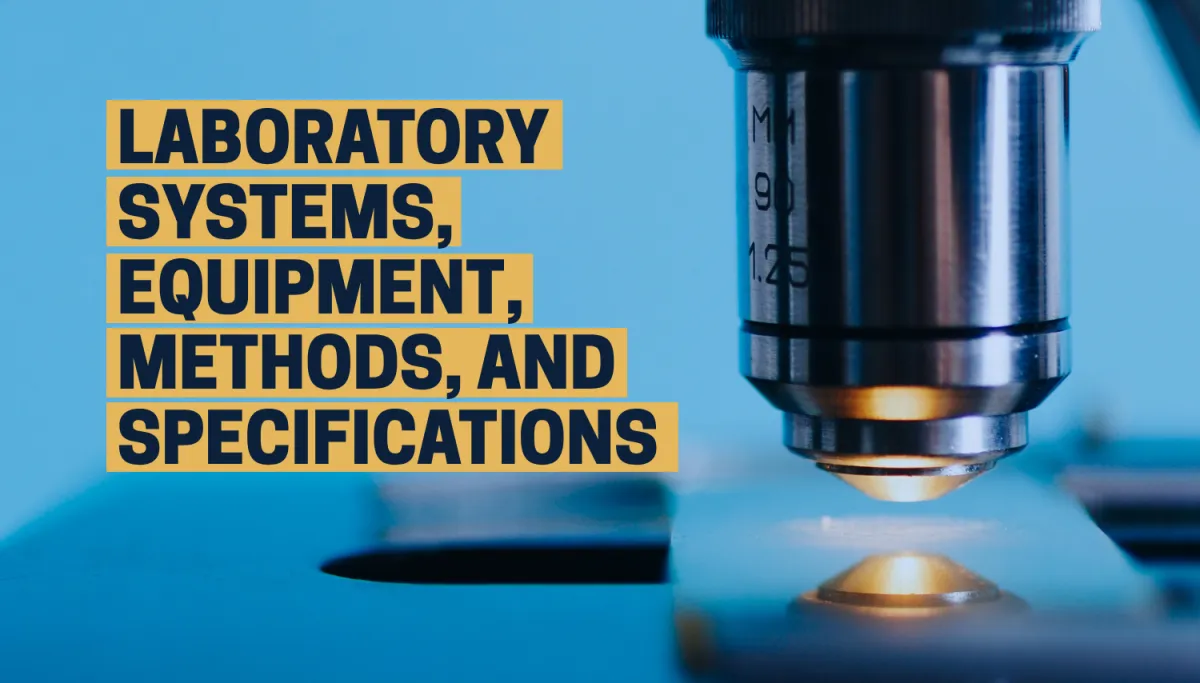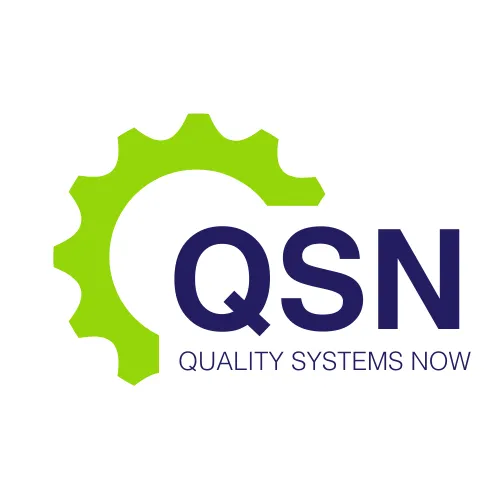LATEST NEWS

Laboratory Systems, Equipment, Methods, and Specifications
Introduction
In the pharmaceutical and biotechnology industries, laboratories play a critical role in ensuring the safety, quality, and efficacy of therapeutic goods. From raw material testing to final product release, laboratory systems are central to verifying compliance with established specifications, supporting process validation, and enabling continuous improvement. The integrity and reliability of laboratory operations directly impact regulatory compliance and patient safety.
For companies operating under Good Manufacturing Practice (GMP), the management of laboratory systems, equipment, methods, and specifications is not only a technical requirement but also a core aspect of quality assurance. This article provides a detailed overview of the key components of laboratory operations in a GMP-regulated environment and outlines best practices for maintaining regulatory compliance and scientific accuracy.
Laboratory Systems in a GMP Environment
Laboratory systems encompass the people, processes, infrastructure, and technologies used to conduct quality control (QC), stability, and investigational testing in support of pharmaceutical manufacturing. These systems must comply with applicable regulations such as the PIC/S Guide to GMP, ICH guidelines, and requirements from regulatory bodies like the TGA, FDA, and EMA.
Quality Control Framework
A robust QC system ensures that all testing activities are planned, executed, reviewed, and documented in accordance with validated procedures. This includes:
Sample management: Ensuring representative, traceable sampling and handling of materials and products.
Analytical procedures: Use of validated, GMP-compliant methods with defined acceptance criteria.
Review and approval workflows: Independent review of results by qualified personnel, including trending and out-of-specification (OOS) investigations.
Data integrity controls: Systems to ensure all data is attributable, legible, contemporaneous, original, and accurate (ALCOA).
Laboratories must also interface effectively with other GMP systems such as deviation management, change control, and CAPA.
Laboratory Equipment: Qualification and Calibration
Laboratory equipment is essential for generating accurate, reproducible, and valid test results. However, equipment is only as reliable as the systems supporting its selection, qualification, maintenance, and use.
Equipment Qualification
All analytical instruments used in GMP testing must be qualified before use. Qualification typically includes:
Design Qualification (DQ): Verifying that user requirements and intended use are defined and that selected equipment meets those requirements.
Installation Qualification (IQ): Documented verification that equipment is received and installed according to manufacturer specifications.
Operational Qualification (OQ): Confirming the equipment operates as intended across defined operating ranges.
Performance Qualification (PQ): Demonstrating that the equipment performs consistently under real-use conditions with typical test samples.
For example, a high-performance liquid chromatography (HPLC) system must be qualified to show that it reliably detects, separates, and quantifies sample components within specification.
Calibration and Maintenance
Regular calibration is required to ensure equipment continues to perform accurately. Calibration intervals should be defined based on risk assessment, manufacturer recommendations, and historical performance. Calibration must be traceable to national or international standards where applicable.
Preventive maintenance schedules should be documented and followed to avoid unplanned downtime and ensure compliance with GMP. Any deviation or failure must be recorded and investigated.
Analytical Methods: Validation and Verification
Analytical methods are the backbone of laboratory testing. For a method to be used in a GMP setting, it must be scientifically sound, appropriate for its intended use, and properly validated or verified.
Method Validation
Validation confirms that an analytical method is suitable for its intended purpose. According to ICH Q2(R1), method validation parameters may include:
Accuracy: Ability to measure the true value.
Precision: Repeatability and intermediate precision across operators, days, and equipment.
Specificity: Ability to measure the analyte without interference.
Linearity and Range: Demonstrating a proportional response across the expected concentration range.
Detection and Quantitation Limits: Minimum analyte levels that can be reliably measured.
Robustness: Resistance to small changes in method parameters.
Full validation is required for methods developed in-house for testing active pharmaceutical ingredients (APIs), finished products, and critical raw materials.
Method Verification
When adopting a pharmacopeial or vendor-supplied method, verification is performed to confirm suitability in the specific laboratory environment. Verification may include selectivity, accuracy, precision, and system suitability testing using actual sample matrices.
Changes to validated methods must be managed through formal change control, with risk assessments determining the extent of revalidation required.
Specifications and Acceptance Criteria
Specifications are legally binding quality standards that define the acceptable limits for raw materials, intermediates, and finished products. These include chemical, physical, microbiological, and sometimes biological properties. Specifications must be based on product knowledge, process capability, regulatory requirements, and ICH guidance (especially ICH Q6A and Q6B).
Setting Specifications
Specifications must be scientifically justified and reflect realistic manufacturing capability. For example, assay limits for an API may be set between 98.0% and 102.0% of the label claim, depending on stability and assay variability.
Acceptance criteria should be established in collaboration with product development teams and formally approved by the Quality Unit. Specifications are referenced in marketing authorisations and must not be changed without prior regulatory approval if classified as registered specifications.
Use in Quality Control
Laboratories must test all materials and products against approved specifications. Failing results (OOS) require immediate investigation, root cause analysis, and appropriate corrective actions. Final product release must only occur when all relevant testing confirms that specifications are met.
Data Integrity and Documentation
Data integrity remains a top priority in laboratory environments. Regulatory expectations require strict control over electronic and paper-based records to ensure traceability, accuracy, and reliability.
Best practices include:
Controlled logbooks and test sheets with unique identification, user signatures, and version control.
Audit trails in analytical software to track changes, deletions, and user access.
Access control systems that restrict unauthorised modification of data.
Electronic Laboratory Information Management Systems (LIMS) to centralise data entry, review, and archival.
Laboratories must perform routine data reviews and periodic audits to ensure ongoing data integrity compliance.
Laboratory Lifecycle Management
Laboratory systems and practices must be reviewed and updated regularly as part of lifecycle management. This includes:
Periodic review of equipment performance, calibration, and maintenance history.
Requalification or revalidation following changes in methods, instrumentation, or regulatory requirements.
Trending and statistical analysis of test results to detect shifts in performance or method drift.
Continuous training and competence evaluation for laboratory personnel.
Engaging experienced GMP consultants at Quality Systems Now can support laboratory lifecycle management by offering expert guidance, gap assessments, and remediation strategies tailored to the evolving regulatory landscape.
Conclusion
Laboratory systems, equipment, methods, and specifications form the foundation of product quality and regulatory compliance in the life sciences industry. Their effective management ensures that pharmaceutical and biotechnological products are tested accurately, reliably, and consistently in line with GMP expectations.
Achieving and maintaining a high-performing laboratory requires more than technical resources—it demands strategic oversight, robust documentation, regulatory alignment, and a continuous improvement mindset. From method validation to data integrity controls, every element must work in concert to uphold quality standards and protect patient safety.
For therapeutic goods manufacturers, biotechnology firms, and contract testing laboratories, partnering with qualified GMP compliance specialists such as Quality Systems Now provides the insight and support necessary to navigate complex laboratory requirements and achieve excellence in every analysis.
